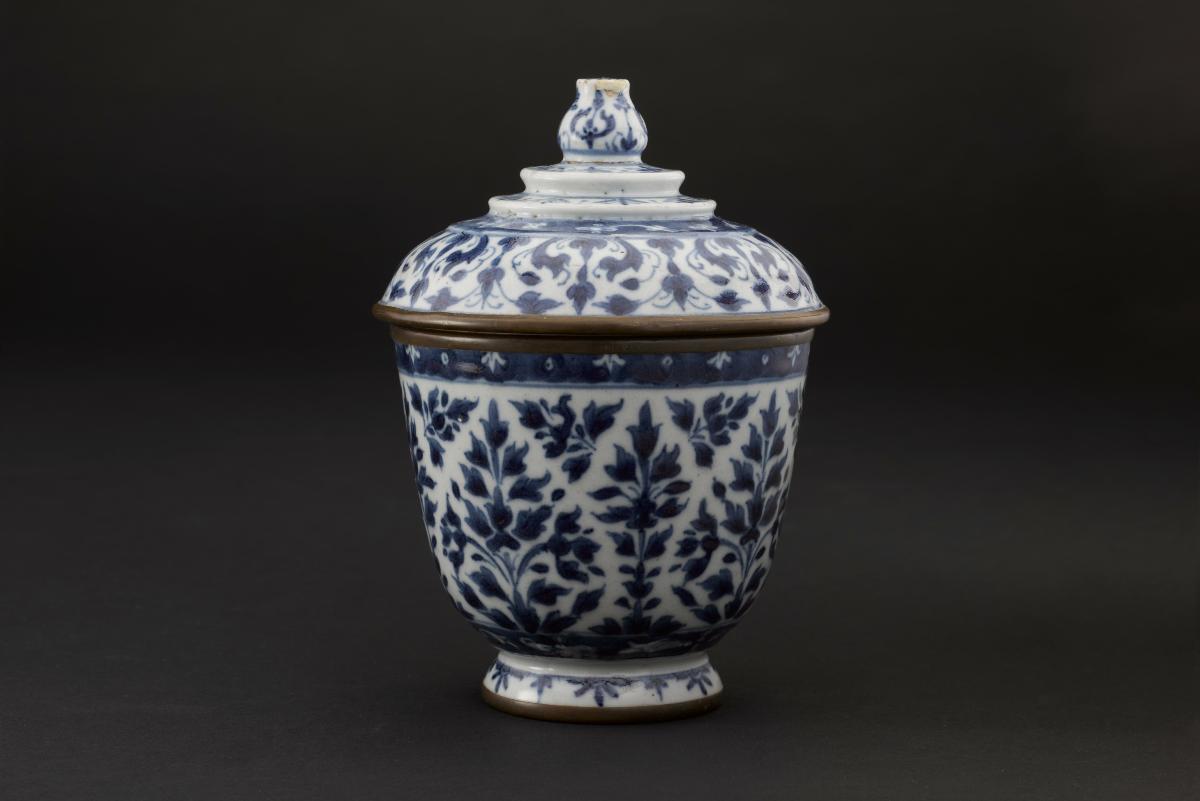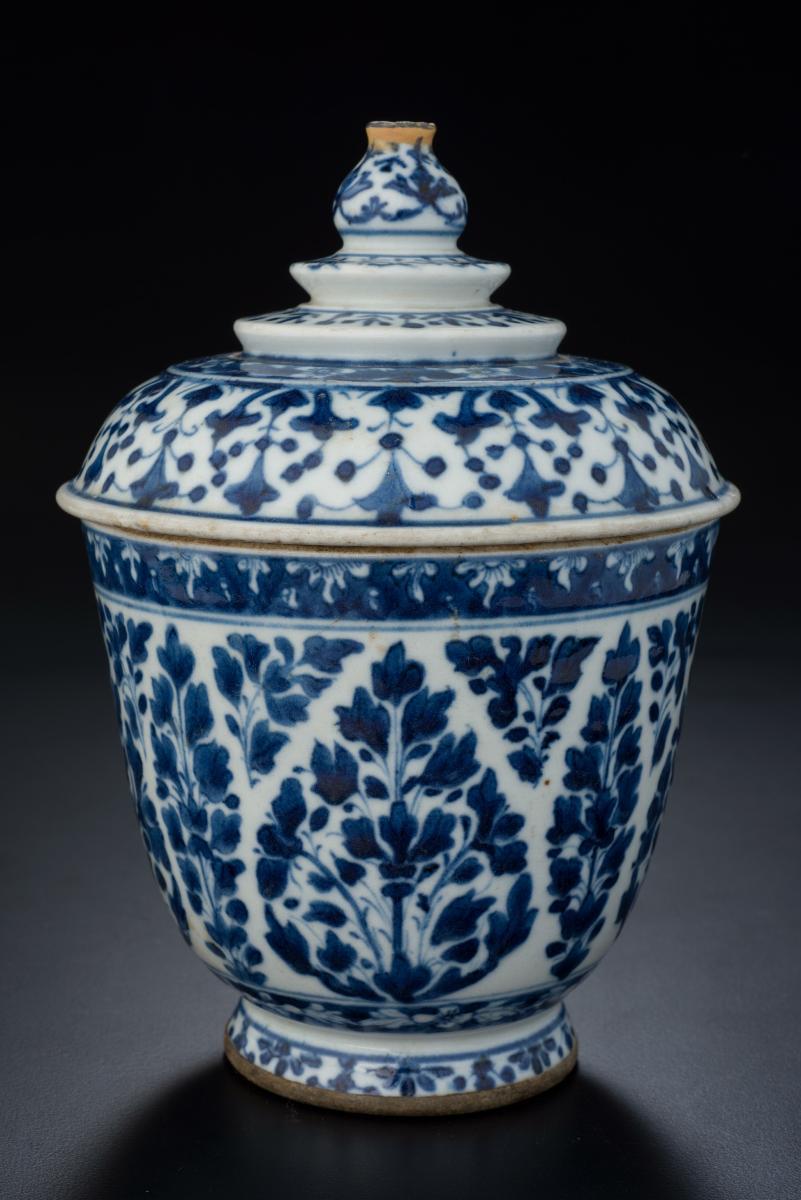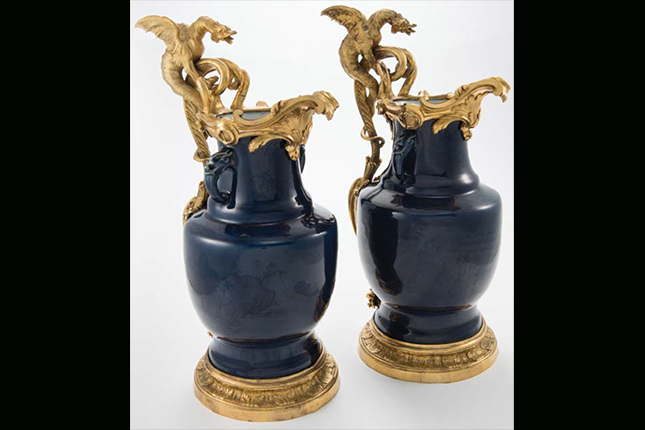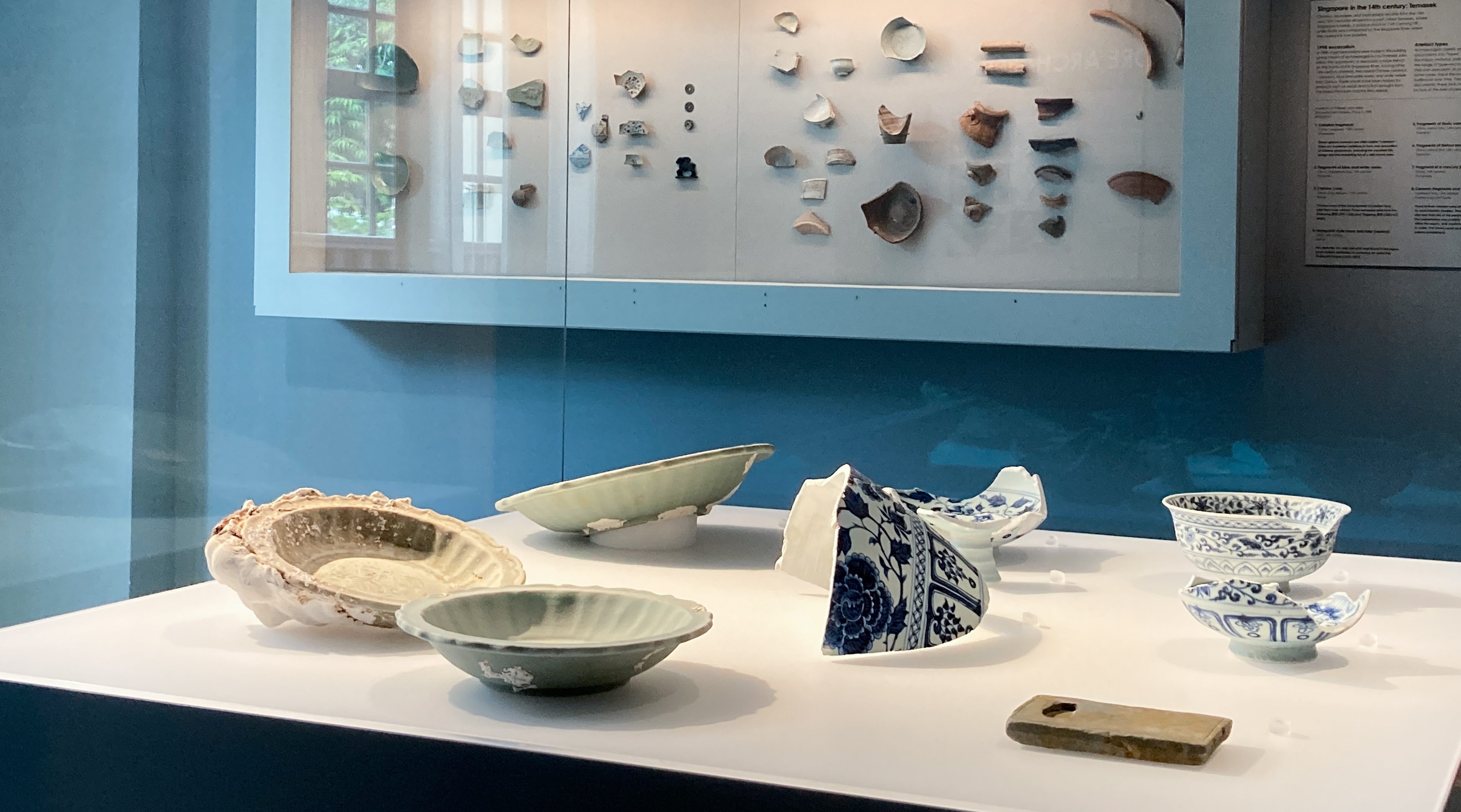These pedestal jars feature a Thai floral pattern in underglaze blue on a white background. They each have a low pedestal and a two tiered lid with a stupa-shaped knob. The walls are gently curved, rising from a narrow base. Both covers project slightly over each jar, with iron brown glazing used to accentuate tiers on the cover and jar.The stylistic quality of these pedestal jars are identified as the Tho Song Koth – a covered jar influenced by the magnificence of royal funerary urns of the Bangkok Period (1782-). Although the form is described as urn-shaped, these jars were not used as a container for the ashes of the dead, but rather as a container for soup or curry. It is also a multipurpose storage jar. The two jars bear precise floral patterns that are set against a solid white background. The floral motif is inspired by flowers and plants native to the mythical Himaphan forest in Indian mythology. The three pointed leaf is one of the most versatile floral patterns and is suitable to be used as a motif on the exterior. The different patterns of foliage decorating each jar suggest that they were not produced as a set, even though they are now sold as such. This is a rare 18th century blue and white Chinese export ware, bearing Thai-style floral motifs. There is little published documentation on porcelain ware of its kind. It is noteworthy that an influx of white and blue Chinese export ware entered Thailand in the second half of the 19th century, but they were decorated with Chinese motifs. Such objects featured prominently among porcelain imports during the reign of King Chulalongkorn as the King himself was a keen collector of Chinese porcelain decorated with Chinese auspicious motifs.In acts of gifting from Thai kings to senior monks as part of an established court practice to recognize status and rank, it is probable that the subdued tone of blue and white was deemed more appropriate for austere monks than heavily gilded Lai Nam Thongs.

















